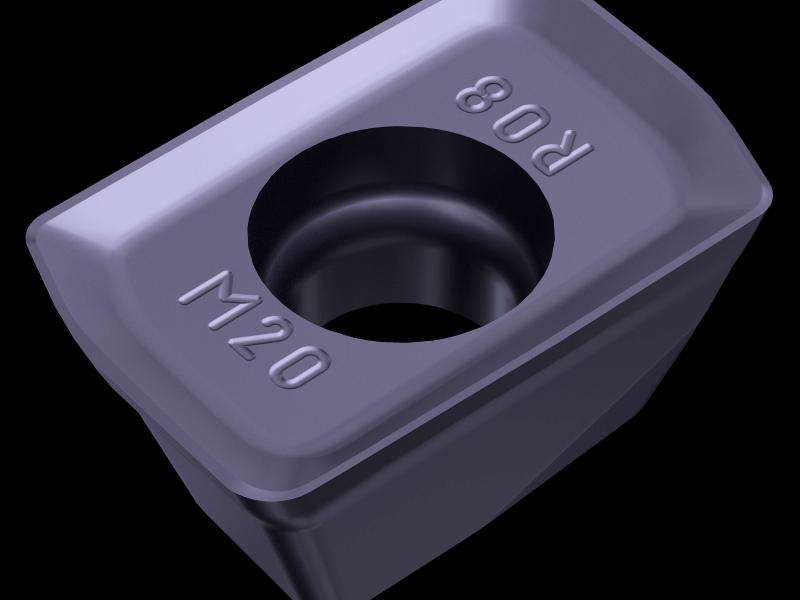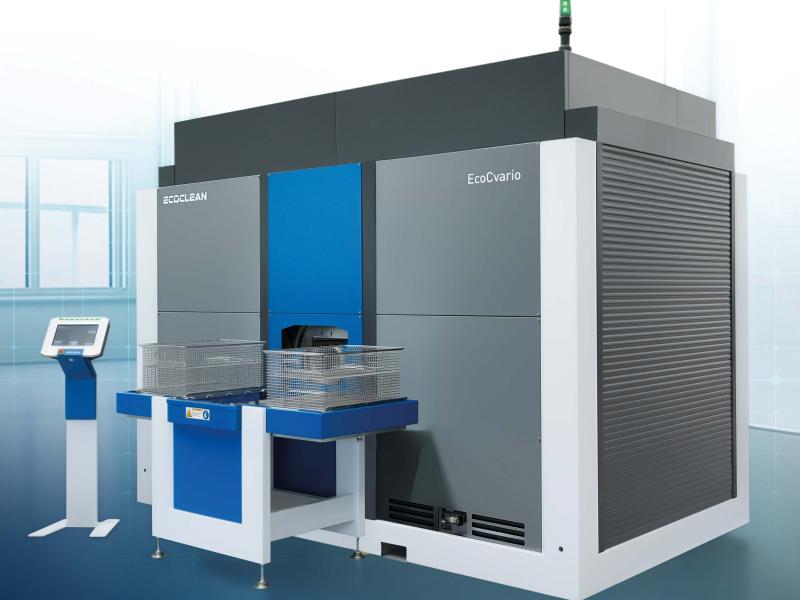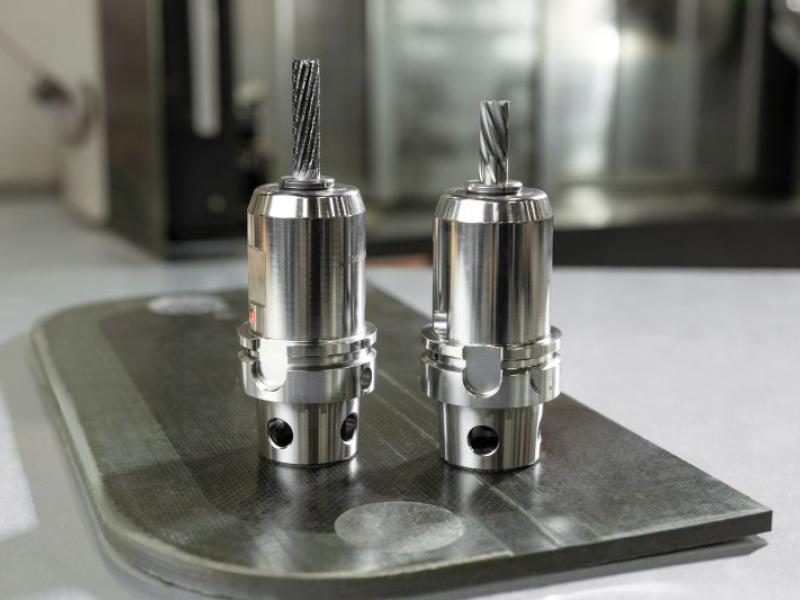For inline dry component cleaning applications, acp systems has developed the new powersnow quattroClean technology. In this innovative process, recycled liquid carbon dioxide is compressed into cleaning granules by a unit integrated into the system. These are then accelerated by compressed air, fed through a nozzle designed especially for the respective purpose and blasted onto the surface to be cleaned. Thanks to the elimination of the customary external pellet production and logistical effort associated with conventional dry ice cleaning, a fully-automated and uninterrupted cleaning or deburring process can be realized.
In industrial parts cleaning, the goal of optimising energy and resource efficiency is leading to the increased use of dry processes to reliably remove contamination. At the same time, more and more companies are demanding automated cleaning processes that can be integrated into their production lines. The innovative powersnow from acp systems AG fulfils both requirements. The new cleaning process efficiently removes stubborn particulate and filmic contamination from virtually all materials and material combinations found in industry. Using cleaning granules made from recycled liquid carbon dioxide, the process can be implemented to clean entire surfaces or selected areas in a reproducible manner. Applications range from surface finishing in the so-called “body-in-white” stage and the removal of welding beads, to the fine deburring of medical instruments and high-quality watch components.
Fully-automated processes through integrated cleaning granule production The medium is fed to the quattroClean powersnow system from cylinders or tanks and therefore has an unlimited shelf life. A purpose-built unit integrated in the system compresses the liquid CO2 into fine cleaning granules. This constitutes a decisive difference to conventional dry ice cleaning, where pellets or dry ice blocks are produced externally and fed to the cleaning system. The system’s continuous, automated media supply of the powersnow is an essential prerequisite when it comes to fully- automated, inline cleaning processes.
Fast, effective and reliable process thanks to four mechanisms of action The macro particles generated by the compressor unit are accelerated by compressed air and blasted via a nozzle onto the surface to be cleaned in a targeted manner. The jet of compressed air containing the granules has a temperature of around minus 78°C. On impacting on the surface, four effects occur. The thermal effect leads to sudden local cooling, and the different expansion coefficients between the substrate and the contaminants cause cracks to form in the latter. The mechanical effect due to the momentum transfer detaches the impurities. When the snow granules impact on the surface, they undergo a transition from the solid to the gaseous phase, with an abrupt increase in volume of around 600 times. This so-called sublimation effect creates micro-pressure waves that also detach contaminants. In addition, during the transition phase, a solvent effect removes filmic/organic contamination.
The strength of these effects and thus the intensity of the cleaning jet can be adapted to different cleaning applications or workpieces by varying the volume flow of carbon dioxide, the compressed air pressure and the type of nozzle.
From surface finishing in the body-in-white stage to fine deburring This process flexibility makes the new quattroClean powersnow technology extremely versatile. For example, the surfaces of car body parts can be selectively cleaned and activated automatically prior to bonding. This is also the case when different materials, such as metal & plastic, metal & wood or different plastics, are to be permanently bonded together. The robustness of the process as well as a large working window thus offer advantages over other dry cleaning methods such as atmospheric plasma and laser. If adhesive residues need to be removed after bonding, the new process also rapidly achieves the required cleanliness. Other typical uses include the preparation of surfaces for bonding or welding and the removal of welding beads. Lines can also be utilized for these tasks, with robots carrying out the respective pre- and post-processing steps. In the automotive industry and electromobility, other areas of application include cleaning tasks during the manufacture of fuel cells and batteries, including solid-state batteries. The process is also used to automate the regular cleaning of DLC coating tools, thus increasing throughput.
The mechanical force of the granules and the local embrittlement caused by the intense cooling effect enables burrs to be efficiently removed inline from metal components such as high-quality watch components and medical instruments. Likewise, burrs can be removed from injection-molded or machined plastic components, including those made of polyphenylene sulfide (PPS) and polyetheretherketone (PEEK), as well as fibre-reinforced plastics.
Task-specific, cost-effective solution
Tests in acp's technical center determine the general suitability of the powersnow cleaning technology for the task at hand and define the necessary process parameters. The key factors influencing these parameters are the cleanliness and/or deburring requirements as well as the cycle time specifications. Based on these, acp systems develops appropriate system concepts for implementation as stand-alone solutions, for integration into the specific production process or for integration into interlinked manufacturing environments. Since all process parameters are recorded and documented, full traceability is guaranteed.






